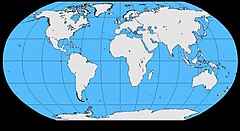Sri Lanka junglefowl
| Sri Lankan junglefowl | |
|---|---|
 |
|
| Male in Sinharaja Forest Reserve, Sri Lanka | |
| Scientific classification | |
| Kingdom: | Animalia |
| Phylum: | Chordata |
| Class: | Aves |
| Order: | Galliformes |
| Family: | Phasianidae |
| Subfamily: | Phasianinae |
| Genus: | Gallus |
| Species: | G. lafayettii |
| Binomial name | |
|
Gallus lafayettii Lesson, 1831 |
|
 |
|
| Range | |
The Sri Lankan junglefowl (Gallus lafayettii), also known as the Ceylon junglefowl, is a member of the Galliformes bird order which is endemic to Sri Lanka, where it is the national bird. It is closely related to the red junglefowl (G. gallus), the wild junglefowl from which the chicken was domesticated. The specific name of the Sri Lankan junglefowl commemorates the French aristocrat Gilbert du Motier, marquis de La Fayette. In Sinhala it is known as වළි කුකුළා (Wali Kukula) and in Tamil it is known as இலங்கைக் காட்டுக்கோழி (Ilaṅkaik kāṭṭukkōḻi).
As with other junglefowl, the Sri Lankan junglefowl is strongly sexually dimorphic: the male is much larger than the female, with more vivid plumage and a highly exaggerated wattle and comb.
The male Sri Lankan junglefowl ranges from 66–72 cm (26–28 in) in length and 790–1,140 g (1.74–2.51 lb) in weight, essentially resembling a large, muscular rooster. The male has orange-red body plumage, and dark purple to black wings and tail. The feathers of the mane descending from head to base of spine are golden, and the face has bare red skin and wattles. The comb is red with a yellow centre. As with the green junglefowl, the cock does not possess an eclipse plumage.
The female is much smaller, at only 35 cm (14 in) in length and 510–645 g (1.124–1.422 lb) in weight, with dull brown plumage with white patterning on the lower belly and breast, ideal camouflage for a nesting bird.
...
Wikipedia

